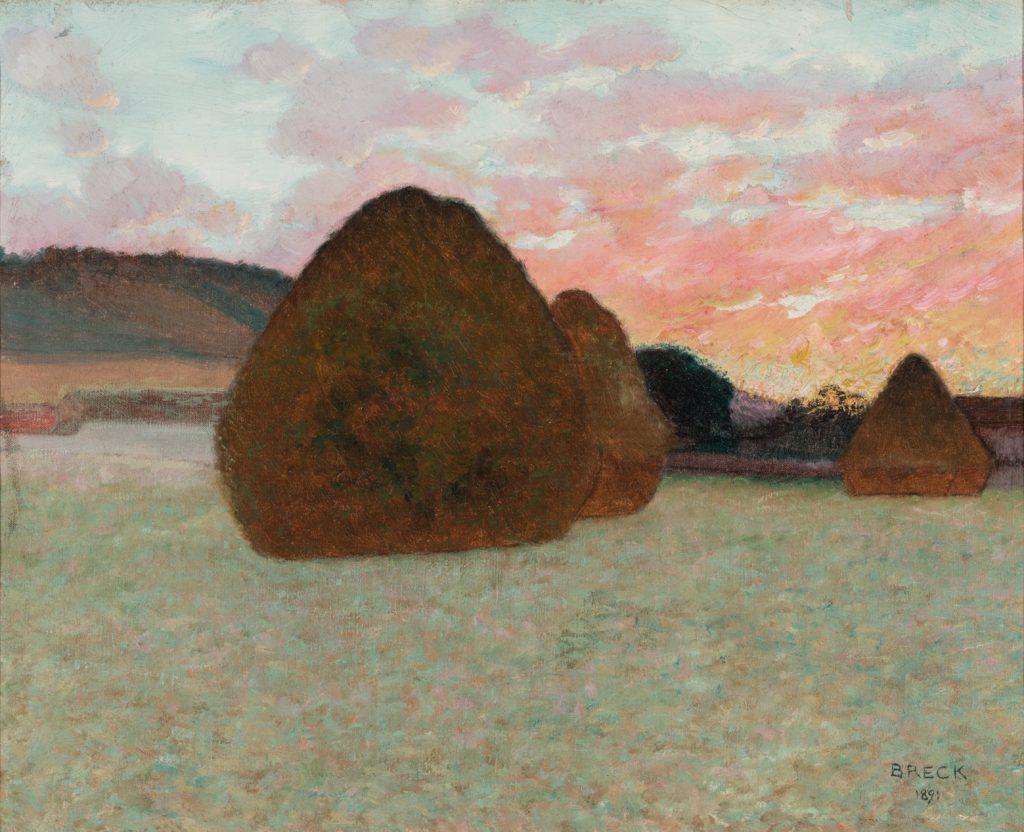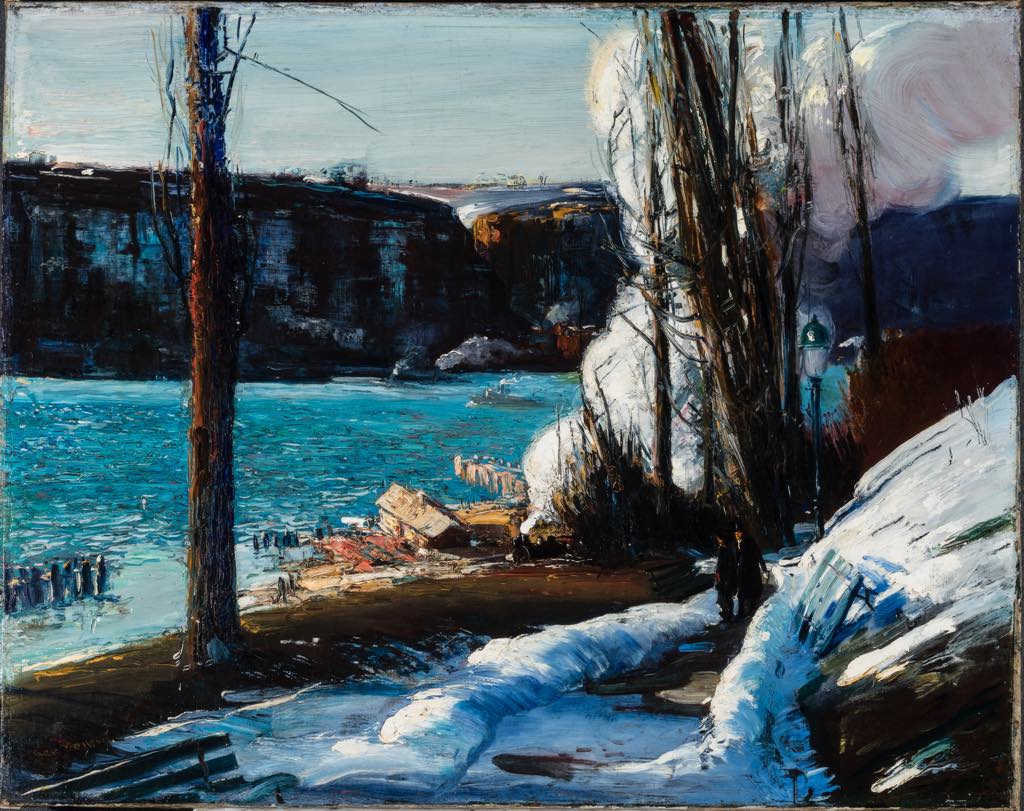Americans can’t travel to France right now, but their paintings can, so the Terra Foundation for American Art has sent a batch to the Musée des Impressionnismes in Giverny and added others borrowed from the Musée d’Orsay and other French collections for the exhibition “The Studio of Nature” (“L’Atelier de la Nature”), a survey of American landscape painting from 1860 to 1910.
The inspiration for the show’s title comes from an open letter written in 1855 by Hudson River School painter Asher B. Durand, who exhorted his fellow artists to forget about copying the work of other artists and to go outdoors and paint in the “studio of nature.”
But while these painters were studying the spectacular nature of their New World, they were also looking back to the Old. They had traditionally gone to Europe to learn about art, but they were now especially attracted by the radical goings-on in France, where the Impressionists were not only painting en plein air but also lighting up their canvases with brilliant dabs of color.
Starting out with panoramic paintings of American landscapes, the show presents the realistic but idealized work of Hudson River School artists. At first worshippers of the rugged wilderness of their relatively new country, they gradually began showing the incursion of humans into the scenery, notably in Alfred Thompson Bricher’s “The Sidewheeler ‘The City of St. Paul’ on the Mississippi River, Dubuque, Iowa” (1872), showing not only the paddleboat but also a factory on the riverbank owned by Bricher’s patron.
Although these paintings are by no means impressionistic, they show the influence of Impressionism in their use of brilliant light effects. The Impressionists, especially Monet, attracted American painters to France in droves. At one point some 50 of them were in Giverny, anxious to paint in the company of the master, who had at first welcomed his admirers and emulators (one, Theodore Earl Butler, even became his son-in-law) but soon got fed up with the distraction they represented and limited his contacts to a few close friends.

A number of talented New World Impressionists, including Willard Metcalf and Theodore Robinson, are featured in the exhibition. One of them, John Leslie Breck, adopted Monet’s habit of painting the same subject – in this case, haystacks – at different times of day and in different light. His 12 haystack studies and a larger painting based on one of them are presented in the show. They are lovely enough to stand on their own, and while they are not imitations of Monet’s series, the comparison is inevitable. Breck, who was a friend of Monet, is credited with introducing Impressionism to the United States when he returned there in 1892 after leaving Giverny, where his relationship with one of Monet’s stepdaughters had met with the disapproval of the master.
Leaving Giverny behind, there are a number of other surprises in this show. James Abbott McNeill Whistler is represented by several paintings and a number of engravings – it turns out that in addition to being a brilliant painter, he was a master engraver.
Two unusual paintings that escape the Impressionist label are worth mentioning. Winslow Homer’s “Summer Night” (1890) shows two women waltzing together on a beach at night, the moonlit waves rising behind them, watched by a small group of people seated in the shadows.
George Bellows’s “The Palisades” (1909), a view of the Hudson River, is striking for its powerful colors and brushstrokes, a harbinger of modernity.
The point of this exhibition is not entirely clear. It starts out as a general overview of American landscape painting, but then it takes a long detour focusing on American Impressionists who sojourned in France before returning to the United States. No matter – I was happy to discover the work of some artists I was unfamiliar with, to see unknown works by familiar artists like Whistler and Homer, and just to look at a number of wonderful paintings.
Favorite



Years ago I heard that Monet put in his lilyponds as a barrier against all the Americans who came to Giverny to paint in his aura. Have you come across this story? I’ve not been able to confirm it.
thanks
No, I have never heard that one!